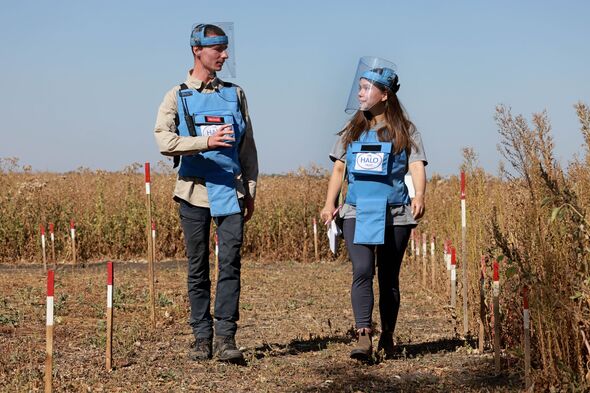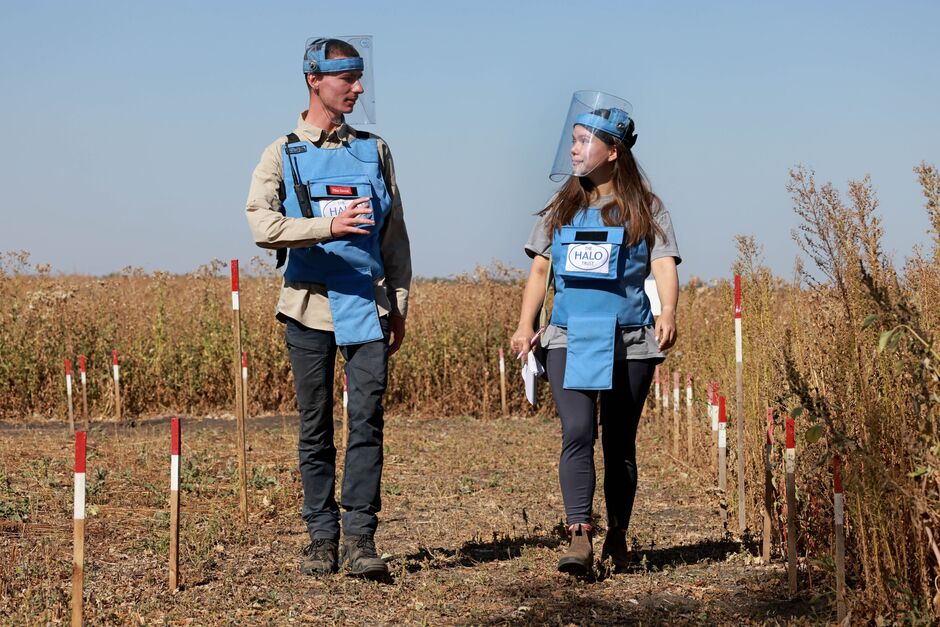
Express reporter Hanna visited minefields in Kharkiv, eastern Ukraine (Image: Jonathan Buckmaster)
Princess Diana’s anti-landmine legacy is under threat due to the recent escalation of deadly conflicts around the world, a charity has warned.
The beloved royal catapulted the issue into the global spotlight when she was pictured walking through a minefield in Angola in 1997.
Just three months after her death, the Ottawa Mine Ban Treaty – which she had championed – was signed by 122 countries and went on to became one of the most successful disarmament agreements in history.
But now wars raging across Ukraine, the Middle East and parts of Africa mean global progress towards eradicating use of anti-personnel mines is at risk.
The Daily Express travelled to Kharkiv in eastern Ukraine with demining charity The Halo Trust to witness the life-saving impact of work to find and dispose of remnants of war.
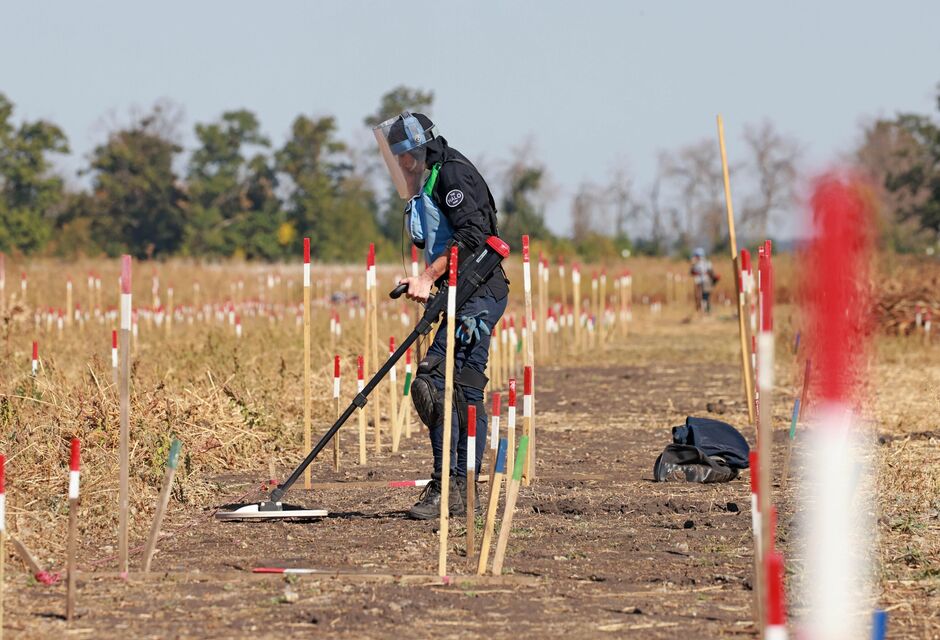
A Halo Trust deminer uses a metal detector to search for threats (Image: Jonathan Buckmaster)
Halo’s chief executive, Major General (Rtd.) James Cowan, said it had seen great success in countries such as Mozambique which have been declared mine-free.
He added: “Some countries like Zimbabwe, Sri Lanka, Cambodia or Angola, they will become mine-free in due course. That would be a tremendous picture, were it not for current conflict.”
Maj Gen Cowan explained that wars in recent decades had largely been contained within states, between governments and insurgents who did not have access to industrial production methods and instead utilised improvised explosive devices (IEDs).
He said: “Many of the wars that we were dealing with four or five years ago were about IEDs – in countries like Afghanistan, Syria, Iraq.
“The Ukraine war is bucking the trend and has brought industrial warfare back into newspaper headlines. And it’s not a small war, it’s absolutely huge.”
As the daily bombardment continued in Kharkiv, we visited a school a couple of hours away where children were being taught how to identify explosive threats.
Pupils were shown images of landmines, unexploded ordnance, trip wires and signs used to mark minefields. A Halo staff member explained what they should do if they came across a threat.
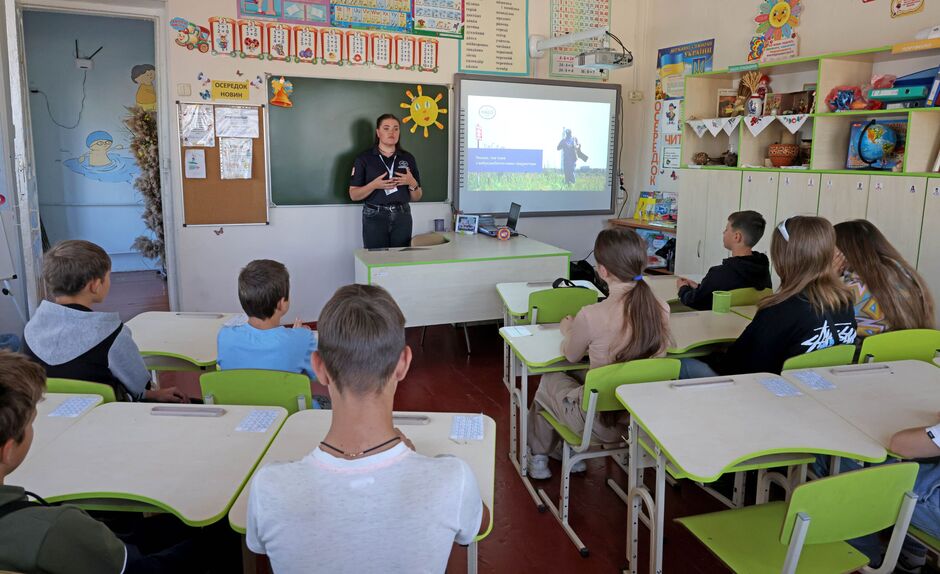
Children are taught about the dangers of mines and unexploded ordnance (Image: Jonathan Buckmaster)
The class was also asked to look for landmines in aerial image of a forest floor – but they proved almost impossible to spot among the thick foliage and vegetation.
Remembering the start of Putin’s full-scale invasion, Sofiia Sushko, 14, described how she was woken by her parents and evacuated to stay with her grandmother further away from the border. She said of the war: “It breaks you mentally. It’s constant fear and especially in Kharkiv it’s very scary.”
Vasylyna Popova, 14, remembered how she woke up and panicked that she was late for school, before her mum told her that a war had started. She added: “In the beginning it was very scary and stressful.
“But now we don’t even hide when there’s an air raid alarm. It’s become a habit, hearing that all the time. I can continue watching TV or scrolling through my phone whilst hearing explosions.”
The dangers of landmines became clear when we visited farmer Ivan Altovskyi, 47, whose tractor hit a mine in 2022. He had left the vehicle to direct a worker as they drove across a half-destroyed bridge.
The land was supposed to have been cleared of explosive threats after Russian forces passed through. Ivan recalled: “Suddenly there was an explosion. It happened so fast, you don’t even have time to feel scared.
“But immediately you feel the impact of the blast wave. You’re concussed, you feel it in your neck and you’re thrown back. I was lucky that no fragment hit me.”
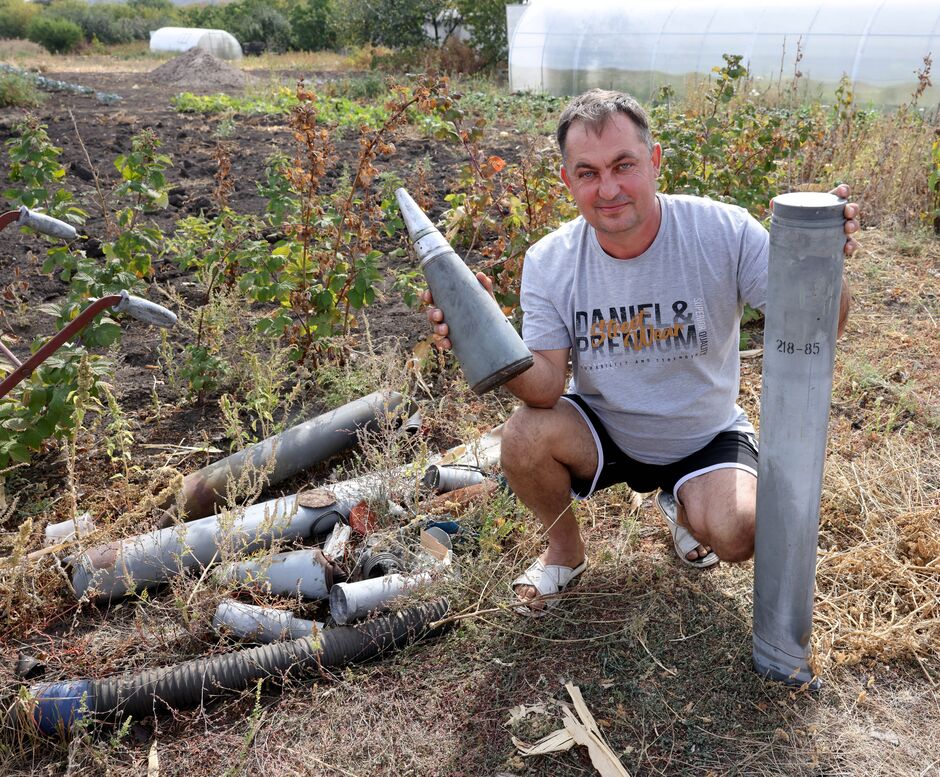
Farmer Ivan holds a missile casing found on his land (Image: Jonathan Buckmaster)
Ivan’s colleague was unharmed and he later contacted Halo who came and checked the land for further threats.
Highlighting the scale of the Russia–Ukraine war, Maj Gen Cowan compared it to the 240km demilitarised zone between North and South Korea. He said: “The Ukrainian frontline is 1,000km long, so it’s really war on a vastly different scale.
“I was recently in Afghanistan, where there are 1,300 square kilometres left to clear. There are 156,000 square kilometres in Ukraine that are potentially contaminated.”
Some 164 countries are now signed up to the Ottawa Treaty. Prince Harry has helped to keep his mother’s legacy alive and spoke in support of The Halo Trust at an event in New York in September.
But the charity has called for a global recommitment to the agreement following a 10% drop in the number of anti-personnel mines cleared in 2023.
A recent report found that around 21,000 fewer anti-personnel mines were destroyed that year compared to the previous one, and global funding for such work fell by 18% in the decade to 2022.
Maj Gen Cowan said: “I would like to be able to meet the need more than I am at the moment. We could be twice or three times as large as we are.
“There are countries that we’re not in yet that need our help. We need to grow, and we need the generosity of the British public to help us do that. The demand is growing exponentially.”
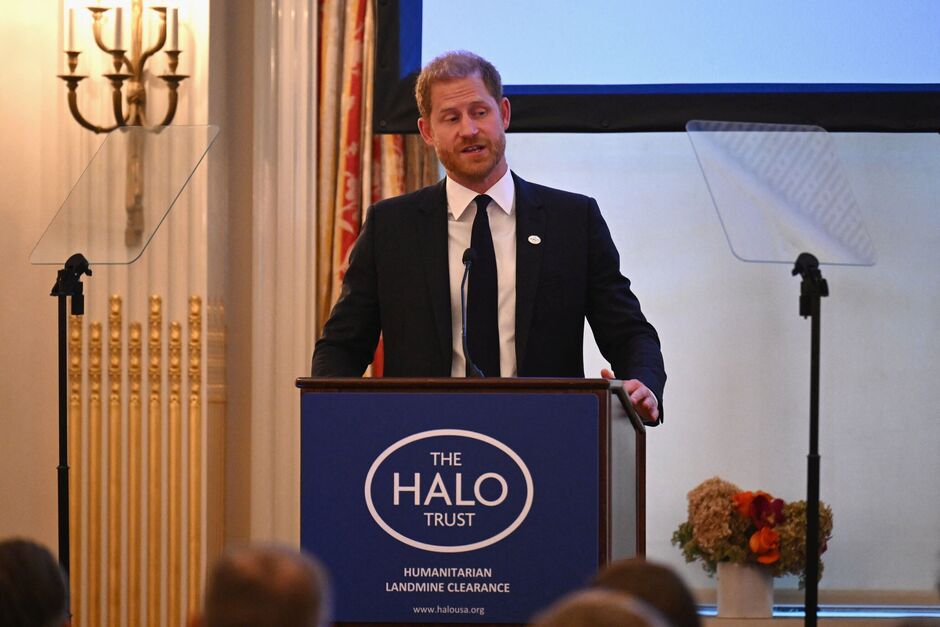
Prince Harry has continued his mother’s legacy with The Halo Trust (Image: Getty)
The former soldier has seen first-hand the impact that demining can have on war-ravaged communities after serving in Helmand Province during the Afghan war.
He said: “What is quite almost redemptive for me is to go back to those countries and see the work of the Halo Trust clearing up after those conflicts.
“There are still 60 people a month – most children – dying as a result of IED explosions in Afghanistan alone. So to be able to make a difference there to clear up those IEDs is something I feel very passionately about.”
Maj Gen Cowan added: “The readers of the Daily Express are known for being incredibly generous people and I would highlight the work of Halo.
“Many people worry about overseas aid but I think that our work is extremely efficient, clearly lifesaving, hugely visible and anyone who looks at what we do realises that saving a life by stopping someone being killed by a landmine is fantastic value for money.
“I have 12,000 staff who go out day after day. They are incredibly brave people. They risk their lives to save others, and I know the British public would want to support that work.”
You can find out more or make a donation here.
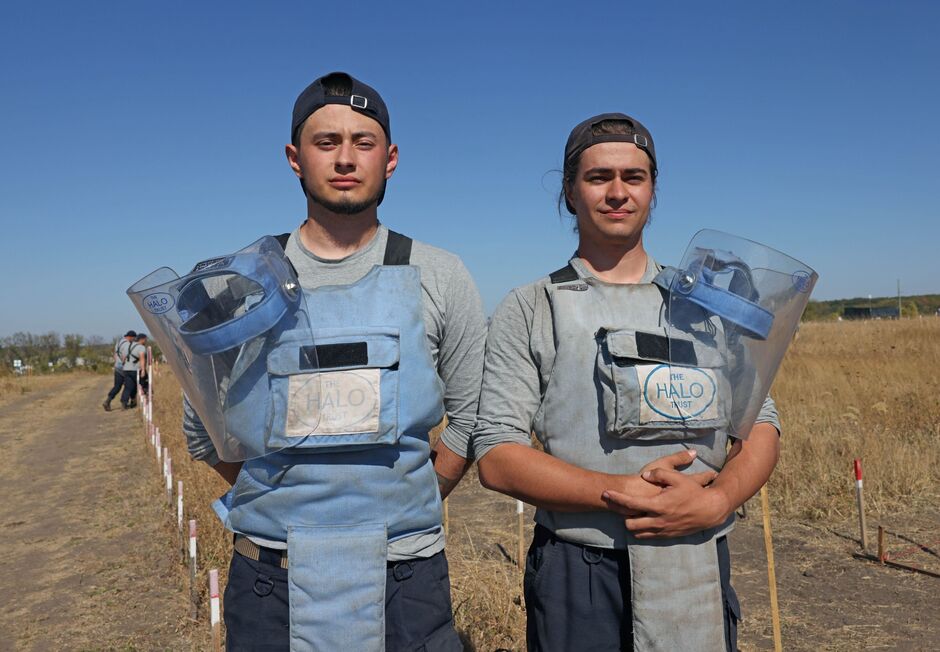
Illia and Mykyta were training to become Halo deminers (Image: Jonathan Buckmaster)
‘In the future, I hope we can clean everything’
Dozens of deminers wearing protective vests and visors are searching for mines, unexploded ordnance and other remnants of war in a field. But for now the threat is not real – we are standing in Halo’s training ground near Kharkiv.
Hundreds of brave Ukrainians have learned manual mine clearance techniques at the site since the start of Putin’s full-scale invasion.
Three days are spent learning the theory including how to identify mines, explosive ordnance and trip wires. Next comes 20 days of physically demanding practice on the land and, finally, an exam.
Some 64 deminers are taking part in training when we visit, including seven women.
Trainee Mykyta Varga, 24, says: “I’m from the Donetsk region, so since 2016 I already knew about Halo and what they do.
“A lot of my friends, their parents have land for farming and Halo demined it so they could harvest and feed themselves. I want to do the same thing here, help the Kharkiv region.”
Although the job is daunting, Mykyta says he was reassured after lessons began and he realised “this is quite a safe job if you do the right thing and every process is correct.”
He adds: “In the future, I hope we can clean everything in Kharkiv region, within maybe 15 years.”
Illia Chyhaliuk, 24, served in the army for two years before leaving due to health problems.
He says of the demining work: “I really enjoy it. It’s very interesting for me because I was doing something similar in the military, but here the safety standards are much higher.”
